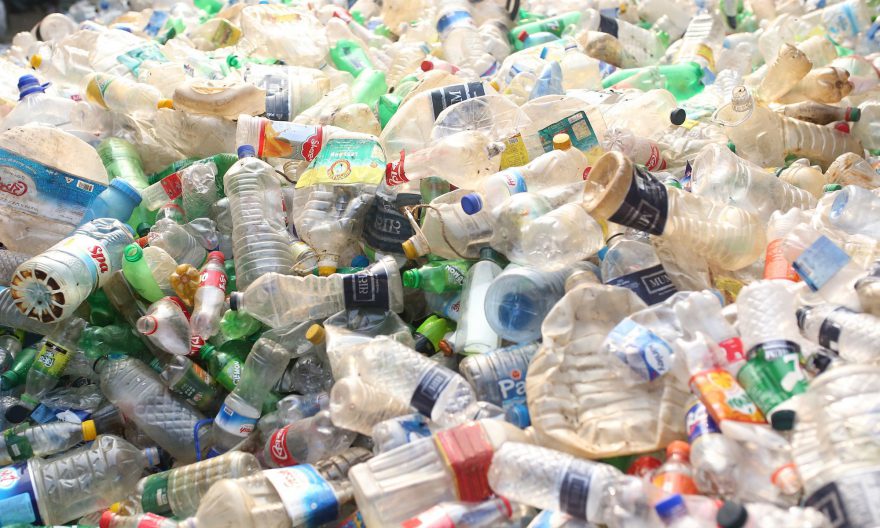
Plastic has become a puzzle in the life of humans. While humans cannot live without it, their life has also become complicated because of its effect on environment. As a result discussions have been harrowing from totally banning the product to reducing it or focusing on the recycling.
According to report by World Economic Forum, plastic is the workhorse material of our modern consumer economy: since 1964, plastic production has increased 20 fold reaching 311 million metric tonnes (MMT) in 2014 – that’s the equivalent of 800 Empire State buildings. Between 1950 and 2015, more than 6,700 MMT of plastics were produced – the equivalent of more than 18,000 Empire State buildings. Since they can persist for hundreds of years, most of these plastics (except those that have been burned) still exist somewhere: as functional products, but also in landfills or as litter in the natural environment.
The United Nations Conference on Trade and Development (UNCTAD) also indicates that globally, 8.3 billion tonnes of virgin (non-recycled) plastic has been produced to date. From this amount, 6.3 billion tonnes of plastic waste had been generated. Plastic production exceeds 300 million tonnes annually and if current trends continue, another 33 billion tonnes will have accumulated around the planet by 2050. Over two-thirds of plastic consumption comes in the form of packaging, such as containers and bags, and building inputs, such as plastic pipes and vinyl siding.
Plastic pollution is considered one of the most pressing global environmental challenges alongside climate change and biodiversity loss. This is mainly due to the polluting effects of plastics production and disposal processes on the air, water and ecosystems, as well as on human and animal health. Plastic production, disposal and waste management are responsible for significant greenhouse gas emissions, including through open-air incineration and energy intensive recycling and incineration facilities. For example, it has been estimated that plastic-related greenhouse gas emissions may represent more than 1 per cent of the global annual carbon budget8 and could represent up to 15 percent of it by 2050, if no action is taken.
About 75 per cent of all plastic ever produced has become waste. It is estimated that the cost of plastic waste externalities plus the cost associated with greenhouse gas emissions from plastic production is US$40 billion annually. Increases in the production and use of plastics plus unmanaged plastic waste disposal is generating significant concerns for developing countries, as they are large producers, consumers, exporters, and importers of different forms of plastic.
Developing countries are key players in the global plastics economy. They are not only among the world’s largest producers and consumers of plastics and plastic products, but also key suppliers of feedstocks used in plastics manufacturing, the main destination for plastic waste exports, and an important source of plastic leakage into the environment.
Plastic production in the developing countries grew at rates significantly above the world average in the first two decades of the 21st century. As a result, the Global South (including China) has surpassed the developed world in overall plastics production. The combined share of developing countries in global plastics output rose from 43.5 per cent in 2009 to 58 per cent in 2018, while the participation of developed countries contracted from 52.5 per cent to 39 per cent and the stake of transition economies remained unchanged at 3 per cent.
Two in every three jobs in the manufacture of plastic products are now concentrated in the Global South: the industry is estimated to generate 7.7 million direct jobs in developing countries, compared to 2.9 million jobs in developed nations and 500,000 in transition economies. Plastics manufacturing and processing operations are unevenly distributed among developing regions, with developing Asia alone accounting for 53 per cent of the industry’s global employment in 2018.
Developing countries accounted for half of the world’s plastics consumption in 2016, closely followed by developed nations (44 per cent) and transition economies (6 per cent).
The prominent role of developing countries as plastics consumers is due mainly to their large populations, as annual per capita plastic consumption in the Global South (27 kg) is low compared to the levels observed in North America (139 kg), Western Europe (136 kg) and Japan (108 kg). Nevertheless, per capita consumption is growing rapidly in many developing countries due to rising incomes, increased urbanization and shifts in consumption patterns.
Developing countries are key suppliers of raw materials to the global plastics industry. This is especially true for countries with large crude oil and natural gas sectors, as 99.5 per cent of plastics are derived from petrochemical feedstocks. As demand for fossil fuels for energy is expected to decline in the future, the industry forecasts that petrochemicals will become a key driver of demand for oil and gas, largely in the form of feedstocks for the manufacture of plastics.
Notably, 27 developing countries and 5 transition economies derived more than a third of total merchandise export revenues from fossil fuels in 2017.24 In particular, five developing countries (Algeria, Angola, Brunei Darussalam, Iraq and Nigeria) derived over 90 per cent of total merchandise export revenues from oil and gas alone. Now more than ever before, fossil fuel dependent countries face the urgent challenge of diversifying their economies towards more sustainable and inclusive sectors due to historically low oil prices, less travel demand due to the COVID-19 pandemic, and national policies to curb greenhouse gas emissions.
BY STAFF REPORTER
The Ethiopian Herald 29 May 2021





